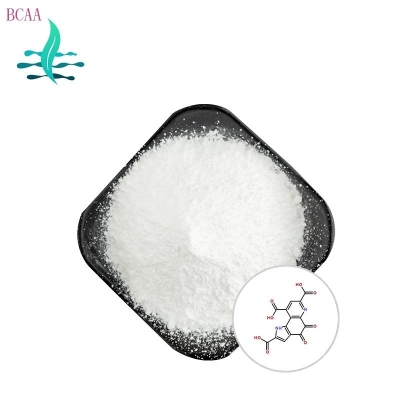-
Categories
-
Pharmaceutical Intermediates
-
Active Pharmaceutical Ingredients
-
Food Additives
- Industrial Coatings
- Agrochemicals
- Dyes and Pigments
- Surfactant
- Flavors and Fragrances
- Chemical Reagents
- Catalyst and Auxiliary
- Natural Products
- Inorganic Chemistry
-
Organic Chemistry
-
Biochemical Engineering
- Analytical Chemistry
-
Cosmetic Ingredient
- Water Treatment Chemical
-
Pharmaceutical Intermediates
Promotion
ECHEMI Mall
Wholesale
Weekly Price
Exhibition
News
-
Trade Service
Isoscabertopin (ISO) is a highly potent and selective anti-tumor agent that has been shown to effectively target and inhibit the growth of a wide range of cancer cell lines.
The production process for ISO involves a series of chemical reactions that transform simple starting materials into the final product.
The first step in the production process is the synthesis of the precursor molecule, 2,3,4,6-tetra-O-benzyl-1,2,3,4,6-pentezine-1,7-dioate.
This molecule is prepared by a series of chemical reactions that involve the protection and manipulation of the double bond in the starting material.
Next, the 2,3,4,6-tetra-O-benzyl-1,2,3,4,6-pentezine-1,7-dioate is reduced to form the corresponding aldehyde.
This reduction step is carried out using a reducing agent such as lithium borate in the presence of a solvent such as DMF.
The aldehyde is then transformed into the corresponding nitrile via a nitration reaction.
This reaction is typically carried out using a mixture of nitrating agents such as nitric acid and sulfuric acid in the presence of a solvent such as acetonitrile.
The nitrile is then transformed into the corresponding isoxazole using a series of chemical reactions that involve the condensation of the nitrile with the appropriate amino acid.
This step is typically carried out using condensation reagents such as dicyclohexylcarbodiimide (DCC) and hydroxybenzotriazole (HOBT) in the presence of a solvent such as DMF.
The isoxazole is then transformed into the corresponding amide using a condensation reaction.
This step is typically carried out using a condensation reagent such as HOBT and a solvent such as DMF.
Finally, the amide is transformed into the final product, ISO, through a series of chemical reactions that involve the hydrolysis of the amide and the formation of the corresponding alcohol.
This step is typically carried out using a hydrolysis reagent such as aqueous sodium hydroxide in the presence of a solvent such as ethanol.
The purification of the final product is typically carried out using a series of chromatographic techniques such as high-performance liquid chromatography (HPLC) and/or column chromatography.
These techniques are used to isolate the desired product and remove any impurities or unwanted side products.
In summary, the production process for Isoscabertopin (ISO) involves a series of chemical reactions that transform simple starting materials into the final product.
The process involves several steps such as the synthesis of the precursor molecule, the reduction of the aldehyde, the nitration of the nitrile, the condensation of the nitrile with the appropriate amino acid, the condensation of the isoxazole, and the hydrolysis of the amide.
The final product is then purified using chromatographic techniques to obtain the desired pure product.






